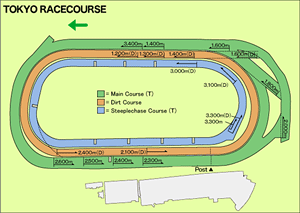2015 Yushun Himba (Japanese Oaks) (G1) - Preview
The 76th Japanese Oaks (Yushun Himba) will be too close to call even with Oka Sho (Japanese 1000 Guineas) champion Let’s Go Donki among the 21 nominations for the 2,400-meter race at Tokyo Racecourse this Sunday.
The Oaks follows the April 12 Oka Sho at Hanshin as the second leg of the fillies' Triple Crown, a jump of 800 meters in distance that can throw even the best of 3-year-old females in Japan. While Tokyo is widely regarded as the fairest of racetracks in Japan, it is also regarded as the toughest, with its long home stretch spanning more than half a kilometer over an upward slant.
Should Let’s Go Donki win, she will become only the eighth Oka Sho winner since 1984 – when the Japan Racing Association introduced the graded race system – to add the Oaks title to her resume; retired seven-time Grade 1 champion Gentildonna was the last to accomplish the feat in 2012, in a record time of 2 minutes, 23.6 seconds for a five-length victory.
Being the Oaks favorite certainly doesn’t guarantee result. Over the past decade, only three of the top picks have won the race, while two have finished second and one third. Second choice Nuovo Record came in first last year ahead of prohibitive first choice Harp Star, then the Oka Sho champion.
The race has shown no particular favor as to the draw, with finishers in the top three spots coming from both the inside and outside and every gate but 1, 8, 11 and 16 over the past decade.
The Oaks purse is worth over 200 million yen and pays 97 million yen to the winner. Post time is 3:40 p.m.
Here's a look across this year's field:
|

Culminar CULMINAR: The Naosuke Sugai-trained filly badly disappointed in the Tulip Sho, finishing 11th as the first choice in the Oka Sho trial. But Culminar, by Deep Impact out of Cursora, bounced back in the big race, finishing runner-up to Let's Go Donki despite a bad jump out of the gate and the slow pace the winner set that frustrated a lot of the runners. “The winning horse dictated the Oka Sho from start to finish,” Sugai said. “We finished strong, though, after traveling in midfield. I thought she showed what she's made of.” Jockey Kenichi Ikezoe has felt all long the Oaks is a better fit for Culminar than the Oka Sho, and Sugai agrees. “We farmed her out after the race and she filled out while she was over there,” said the trainer. “She's matured, both mentally and physically. She's got a great set of lungs and has a good temperament so she should last the distance. The long straight at Tokyo should suit her so all we need is a firm going.” |
|
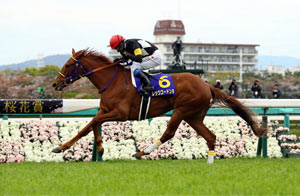
Let's Go Donki LET’S GO DONKI: She went wire-to-wire in the Oka Sho to win the first Japanese Classic race of the season by four lengths. But the folks at the Tomoyuki Umeda stable will admit they were not expecting such a performance from their King Kamehameha daughter. "I thought it might be a good idea to run with it after the start," Let's Go Donki's jockey Yasunari Iwata said. "To be honest I didn't want to go but it worked out for us. There was some luck that came into play." Let's Go Donki went off as the fifth choice in one of the slowest Oka Sho in recent memory. Iwata hadn’t planned on setting the pace and had it not been for the unusual way the race unfolded, he would have probably have traveled the filly in midfield. But Let’s Go Donki’s performance in the Tulip Sho – an Oka Sho trial also held at Hanshin over 1,600 meters – was encouraging enough for Iwata to spring the surprise, despite finishing third in the Tulip Sho. “If we hadn’t led in the Tulip Sho, I wouldn't have done it,” Iwata said. “We may have lost but she looked promising during the race and she showed that she's got what it takes. We were able to test her in front in a trial, which made a huge difference for us. Whether the distance is her natural distance aside, I need to get her to settle. If I can do that, she should last 2,400 meters and let’s not forget it's a race among 3-year-old fillies, in which anything can happen. She has no problems running left-handed, and the horse has stayed loose; she should be just as good as she was for her last race. I thought the field in this year's Oka Sho was pretty strong. I'm sure many of them will be looking to bounce back in the Oaks. But we won a tough Oka Sho, and we can go into the next race with our chins held up high.” |
|
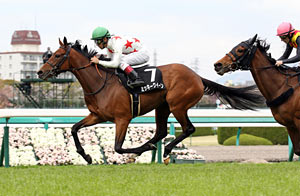
Mikki Queen MIKKI QUEEN: The Yasutoshi Ikee-trained filly wasn’t part of the Oka Sho, but was second to Cat Coin in the Queen Cup and is coming off victory in the 2,000-meter Wasurenagusa Sho, held the same day and at the same racetrack as the Oka Sho. The highly prized daughter of Deep Impact was being favored for the Oka Sho before she missed out, so she still should be among the top picks this weekend with every chance of snatching the second jewel in the filly’s Triple Crown. Ikee is just hoping Mikki Queen can maintain her weight which she tends to lose fairly easily. “She’s untested at 2,400 meters but we like to think that won’t be a huge negative for her,” Ikee said. |
|

Queens Ring QUEENS RING: The Shadai Farm bred, Tetsuya Yoshida owned filly was a perfect 3-for-3 going into the Oka Sho but like many others, the unusual slow pace and a heavier going than listed took a lot out of Queens Ring, the third betting favorite who wound up fourth under Mirco Demuro. The longest the Manhattan Cafe daughter has run is 1,800 meters but given her bloodlines, there’s every reason to believe she can pass the test in the Oaks. Said trainer Keiji Yoshimura, “The Oka Sho turned out to be a very slow race but she did settle, which is encouraging ahead of a 2,400-meter race. All we want is for the turf to hold up.” |
|

Rouge Buck ROUGE BUCK: Trainer Masahiro Otake was left dazed and confused like everyone else after Rouge Buck, the outstanding favorite in the Oka Sho, slumped to ninth in the race to her first career defeat. “I’m sure there’s more than one reason for why she lost the Oka Sho, but she didn’t seem any different to us going into the race,” Otake said. “What we do know is that she was boxed in and the horses who went on the outside had all the advantage; she could never get into the flow and before we knew it, the race was over.” The Manhattan Cafe filly won her first three starts – all against the boys – and her Feb. 8 victory in the Kisaragi Sho by a cozy two lengths cemented her status as the horse to beat in the Oka Sho. But the race slowed beyond everyone's expectations, forcing Rouge Buck to endure a tough trip that saw her turn for home in 15th, making it nearly impossible to completely close the gap. Otake, though, is confident his horse will redeem herself at Fuchu, where the pace more or less tends to pick up. The trainer also feels 12 furlongs is a better fit for Rouge Buck than the 1,600 meters of the Oka Sho. "I imagine it’s the same with some of the other horses, but the pace was so slow that she didn’t need any time to recover," Otake said. "The shine on her coat has looked considerably better and she’s looking fine physically. She’s been racing on a regular basis so as long as she puts in some work, she should be fine. She’s untested at the distance of 2,400 meters but she's won at Tokyo over 2,000 meters, which is a good sign for us. We’re counting on a smoother race – and a better result – this time around." |
|

- Preview
- Barrier draw
- Past performances of runners

- News
- Race result
- Video
- 2025 English

- 2024 English

- 2023 English

- 2022 English

- 2021 English

- 2020 English

- 2019 English

- 2018 English

- 2017 English

- 2016 English

- 2015 English

- 2014 English

- 2013 English

- Photo Gallery
2025 Winner: Kamunyak
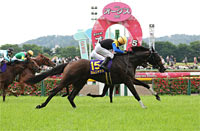
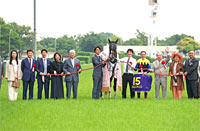
2024 Winner: Cervinia
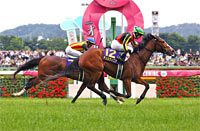
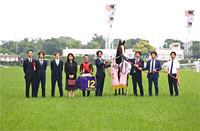
|
















